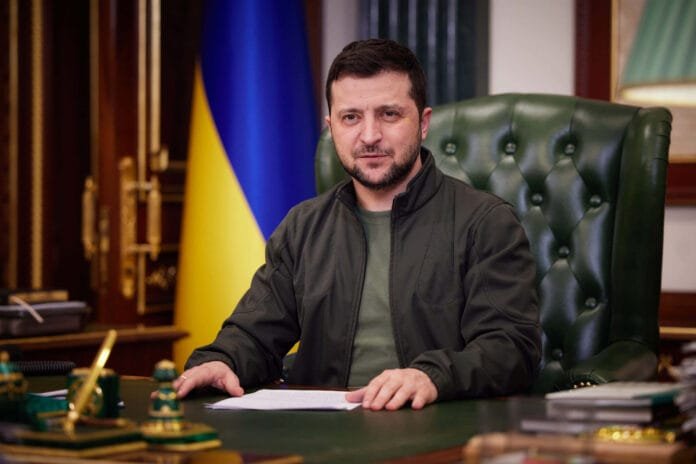As the conflict between Russia and Ukraine nears the grim milestone of 1000 days, Ukrainian President Volodymyr Zelenskyy is set to unveil a comprehensive “victory plan” aimed at bringing an end to the ongoing war. This announcement, scheduled for October 16, will be presented to the Verkhovna Rada, Ukraine’s parliament, and has been shaped by inputs from Kyiv’s Western allies, including the United States and NATO.
A Strategic Response to Ongoing Conflict
The anticipated victory plan comes in the wake of Zelenskyy’s previous 10-point peace initiative, signaling a strategic pivot towards a more aggressive stance in negotiations with Russia. Zelenskyy has indicated that this plan is designed to “force Russia to enter negotiations to end the war,” highlighting the urgent need for a resolution as the humanitarian and military toll continues to mount.
Mykhailo Podolyak, an advisor to the head of the Presidential Office, emphasized that while the plan will be made known to parliament, certain sensitive elements will not be disclosed publicly. He noted, “The President wants society to understand. There are components in the victory plan that will certainly not be discussed publicly. This pertains to the mathematical aspect, such as the quantity and type of weapons that need to be provided to Ukraine.”
Core Components of the Victory Plan
While the full details of the victory plan remain undisclosed, it is expected to encompass military, political, diplomatic, and economic elements crucial to Ukraine’s ongoing defense efforts. According to reports, the plan may include:
- NATO Membership Bid: Strengthening Ukraine’s aspirations for NATO membership, which could provide the country with increased military support and strategic backing from Western allies.
- Access to Long-range Weapons: Securing long-range weapons capable of striking deeper into Russian territory, thus enhancing Ukraine’s offensive capabilities.
- Strengthening Air and Military Defenses: Increasing investments in air defense systems to protect Ukrainian cities and military assets from ongoing Russian aerial assaults.
- Enhanced Sanctions Against Russia: Advocating for stricter sanctions on Moscow to economically isolate the Kremlin and undermine its war efforts.
- Economic Support and Reconstruction: Plans for significant economic aid to rebuild Ukraine’s war-torn infrastructure and stabilize its economy during and after the conflict.
The plan reflects a comprehensive approach to both immediate military needs and longer-term strategic goals, aiming to bolster Ukraine’s position in the war while addressing the economic challenges it faces.
Timing and Urgency
There is a pressing urgency for Zelenskyy to finalize and present this victory plan, particularly in light of the upcoming U.S. presidential elections. Support from President Joe Biden has been crucial for Ukraine, and Zelenskyy hopes to solidify this backing before potential shifts in U.S. policy that could result from the election. The Ukrainian leadership is aware of the delicate geopolitical landscape and seeks to maintain strong support from Western allies as the conflict continues.
In recent months, Ukrainian forces have faced significant challenges on the battlefield. Despite their resilience, they remain outnumbered by Russian troops, and logistical issues have hampered their military operations. Limited ammunition and an unpopular mobilization drive have led to significant losses, particularly as Russia intensifies its offensives in eastern Ukraine.
Diplomatic Efforts and European Union Relations
Following the presentation to the Ukrainian parliament, Zelenskyy will take the victory plan to the European Union, where discussions regarding Ukraine’s membership bid with the bloc are ongoing. The plan is expected to be unveiled at the upcoming EU Summit on October 17 and 18, which presents an opportunity for Ukraine to reinforce its ties with European leaders and further secure economic and military support.
Zelenskyy’s administration is also working on organizing a second round of peace talks, aiming to bring Russia and its allies to the negotiating table. The upcoming talks could prove critical in establishing a framework for ending the conflict, although skepticism remains about Russia’s willingness to negotiate in good faith.
The Humanitarian Toll
The war has inflicted a heavy humanitarian toll on Ukraine, with millions displaced and countless lives lost. The international community has watched closely as the conflict continues to escalate, prompting widespread calls for a ceasefire and peace negotiations. Zelenskyy’s victory plan aims not only to advance military objectives but also to address the pressing humanitarian needs resulting from the prolonged conflict.
As the situation evolves, the Ukrainian government is aware that the path to peace is fraught with challenges. The proposed victory plan represents a strategic maneuver to strengthen Ukraine’s position, both on the battlefield and in diplomatic discussions, while also addressing the urgent needs of its citizens.
Conclusion
As Ukraine approaches 1000 days of conflict, President Zelenskyy’s victory plan marks a critical moment in the ongoing struggle against Russian aggression. By consolidating military, diplomatic, and economic strategies, the plan aims to pave the way for a resolution to the war. However, the effectiveness of this plan will depend on the cooperation of Western allies and the willingness of Russia to engage in meaningful negotiations.
The stakes are high as Ukraine continues to fight for its sovereignty, and the international community will be watching closely as Zelenskyy outlines his vision for victory in the days to come. The outcome of these efforts will significantly impact not only Ukraine but also the broader geopolitical landscape in Europe and beyond.
